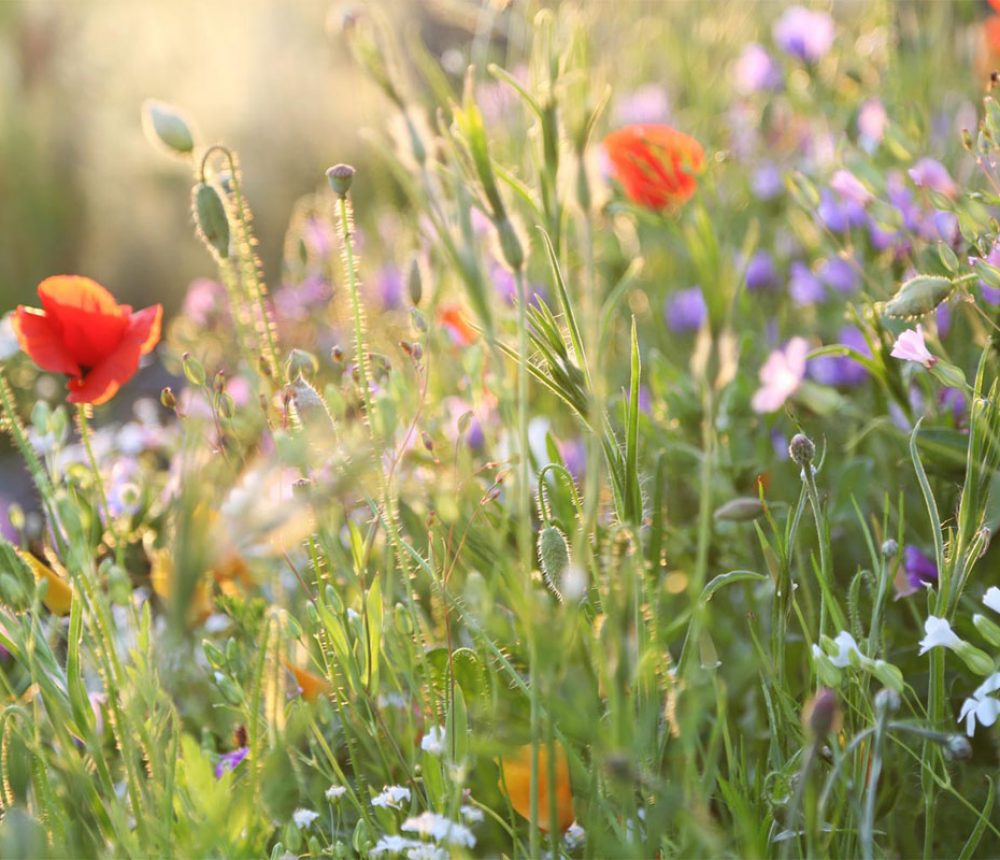
Draped over greening and lichen-covered furniture, stubbornly positioned in the last corner of your garden capable of capturing any fragments of that rare British summer sun, there is undoubtedly, somewhere in the background, the low vibrating whine of a mower or strimmer. You drink in the heady dizzying and wonderfully summery smell of freshly cut grass that fills the lower atmosphere, and smile to yourself, life is good. But what is it that makes that smell so attractive, so powerful and so memorable?
The grass, if it were capable of smell, would not have such a fond and happy response to its own scent. In fact, it would probably baulk in fear, in the same way that we might if our burglar alarm went off at 2 am and we were home alone, sleeping without any pyjamas on. For these “green leaf volatiles” (GLVs) that grasses and other leafy plants release, which are the chemical culprits of that “cut-grass” smell, are actually a distress call that alert other plants to imminent danger – a danger involving having your head cut off by a giant gardener dressed in green, covered in the severed body parts of your comrades, sadistically whistling as he goes.
Similar to terpenes, GLVs are products of plants’ secondary metabolism, which is the metabolism that is not directly involved in growth and development. However, secondary metabolites have a wide range of very important roles nonetheless. GLVs are chemical compounds(1) that have six carbon atoms and include alcohols, aldehydes and esters. Examples of specific GLVs that have been discovered include hexenal, hexanol, hexenyl acetate, nonanal and nonenal(2). (Z)-3-hexenal is thought to be the main compound that gives freshly cut grass its signature scent. These small and volatile compounds vaporize when they are released from the plant and our noses can detect them from up to a mile away.
These plant GLVs are not only released into the air in response to lawn mowing but many other forms of damage that may occur via herbivory, fungal or bacterial infection, and other stresses such as drought, heat and high light intensities. The GLVs act as a distress signal, warning surrounding plants, and even undamaged parts of the same plant(3), of impending danger, priming them for defence by initiating the activation of defence and stress-related genes. However, GLVs also have the ability to induce healing in the damaged plant and communicate an outstanding complexity of signals to plants, pathogens and insects alike. For example, GLVs can attract or repel herbivores and their natural enemies, and have antifungal and antibacterial properties.
GLVs can mediate these signalling responses both with and without crosstalk with plant hormones, such as jasmonic acid, which are famously released by plants for defence in similar situations. Plant damage caused by insects provides some of the most amazing examples of the power of GLVs. For example, parasitic(4) wasps have been shown to be more attracted to plants releasing GLVs specific to herbivorous insect-based wounding, than to those emitting GLVs that suggest that mechanical wounding has occurred. This means that the parasitic wasps can follow the GLV trail to feast on unsuspecting herbivorous insects, bringing benefit to both the victimised plant and the wasp.
Although we can see a reason for parasitic wasps and other herbivore predators to be attracted to the smell of specific GLVs, there does not seem to be a particular reason why us humans seem to especially love the smell of grass. It is most likely that we simply develop a nostalgia for the cut-grass GLVs as we are exposed to them most often, what with grass being so widespread in modern society, alongside our overpowering and irresistible desire to mow it. The reason we are attracted to the smell rather than repulsed, is thought to be due to the fact that, as they ripen, many nutritious and delicious fruits(5) release similar GLV mixtures, and hence similar scents, to grass.
So, next time you are flicking flies off your salty suncream-sticky skin, sipping on an orange juice, and drinking in that summer smell, just remember, that you are thriving on the pure trauma of our planty friends. And if that thought tugs on your empathy strings enough, perhaps consider leaving the mower in the shed this year and letting the lawn thrive into a haven for insects and other wildlife; you might even be surprised by the variety and colour of plants that decide to crop up!
References
Disclaimer: Our products are not intended to prevent, treat or cure any disease or serious illness. If you have any health concerns please contact your doctor or pharmacist.
© 2022 TRELONK